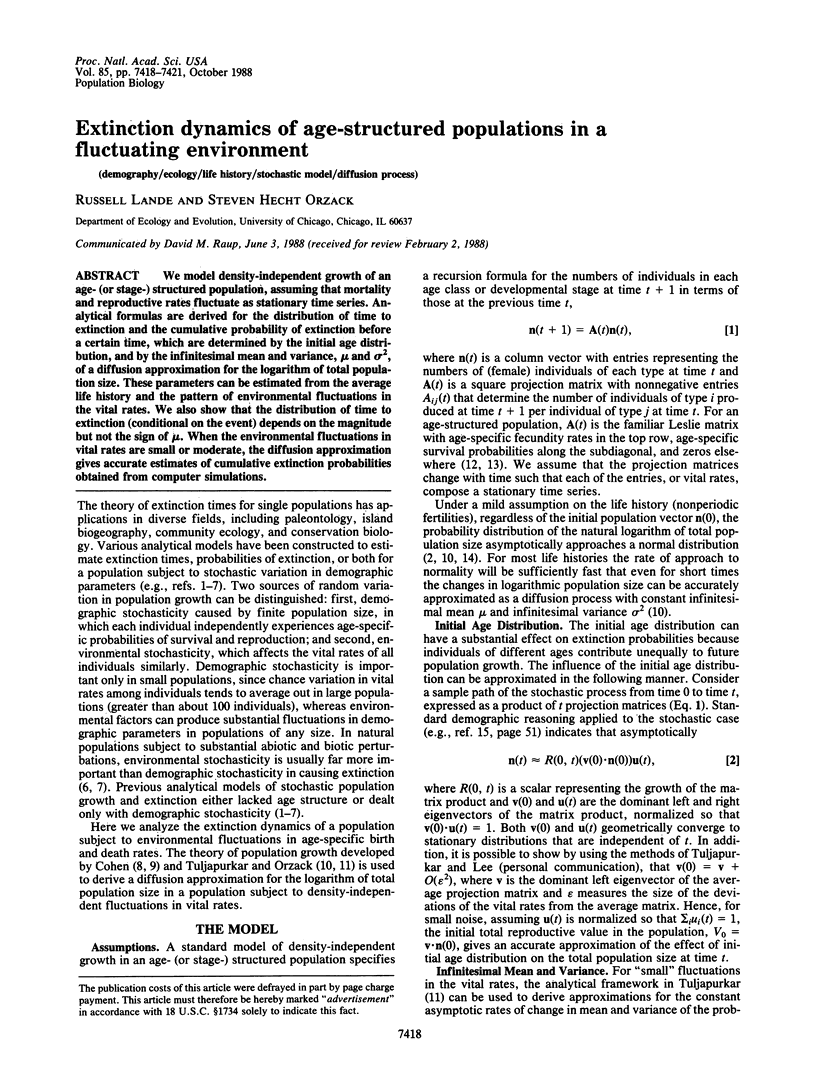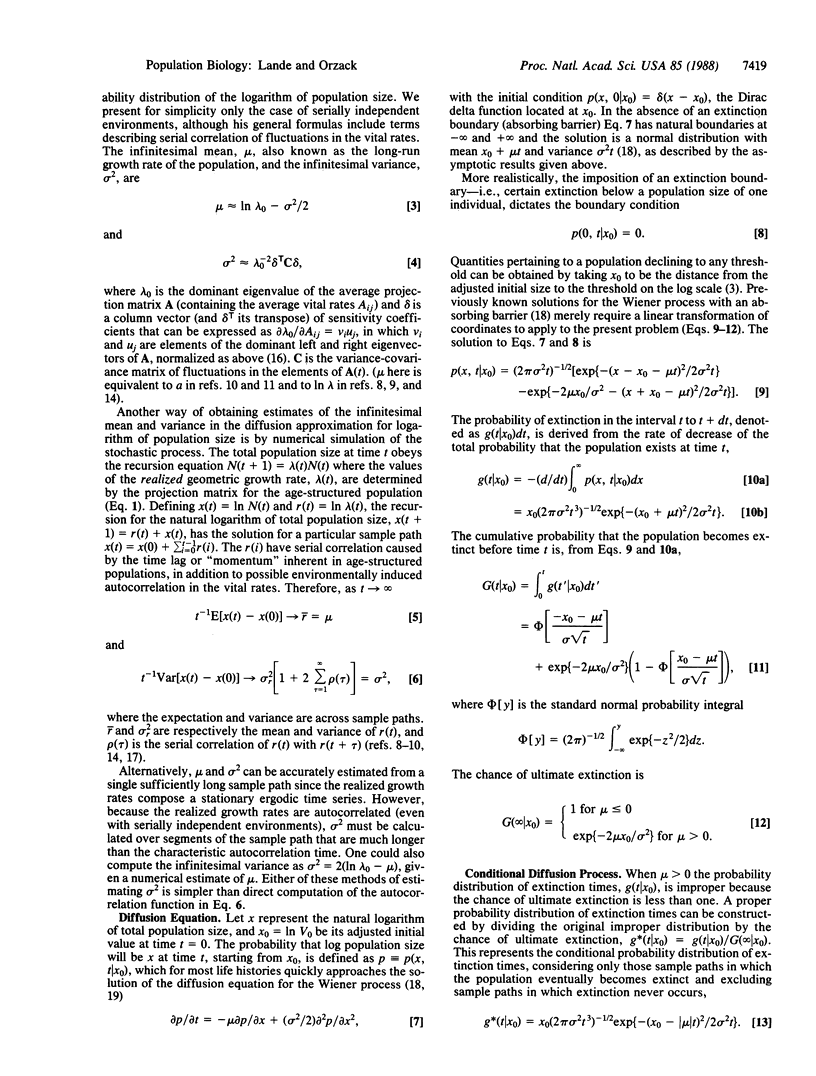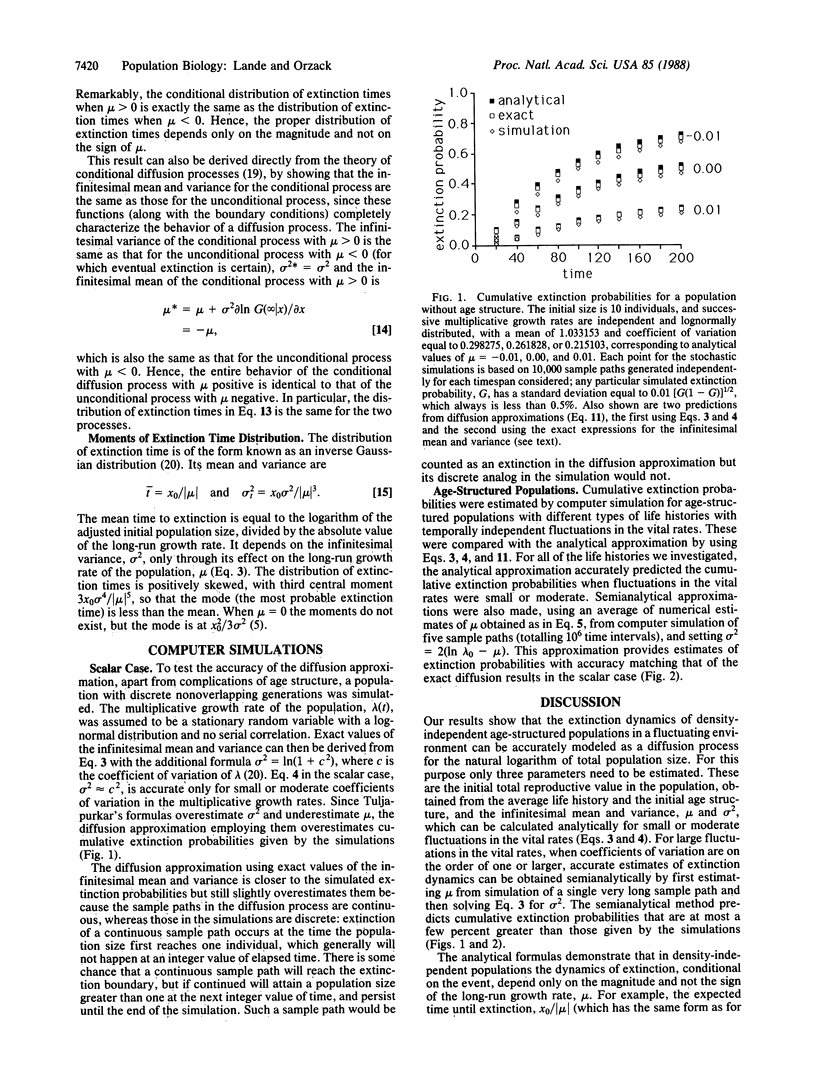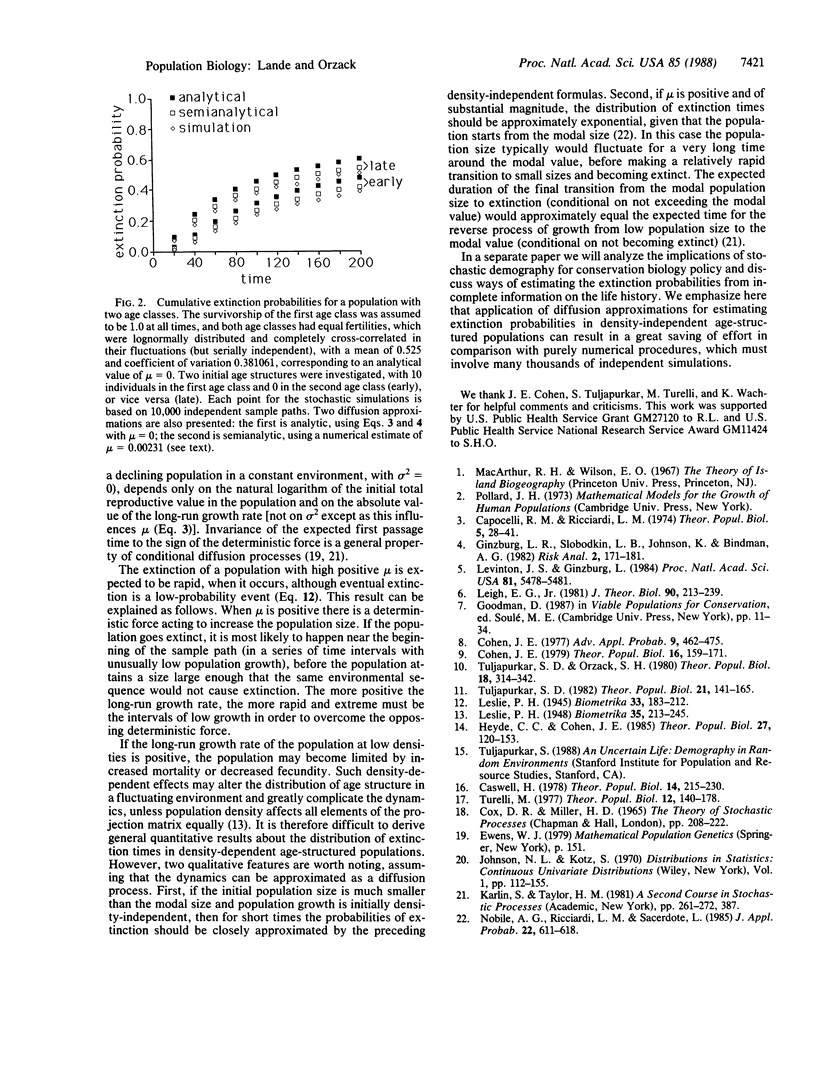Abstract
We model density-independent growth of an age- (or stage-) structured population, assuming that mortality and reproductive rates fluctuate as stationary time series. Analytical formulas are derived for the distribution of time to extinction and the cumulative probability of extinction before a certain time, which are determined by the initial age distribution, and by the infinitesimal mean and variance, mu and sigma 2, of a diffusion approximation for the logarithm of total population size. These parameters can be estimated from the average life history and the pattern of environmental fluctuations in the vital rates. We also show that the distribution of time to extinction (conditional on the event) depends on the magnitude but not the sign of mu. When the environmental fluctuations in vital rates are small or moderate, the diffusion approximation gives accurate estimates of cumulative extinction probabilities obtained from computer simulations.
Full text
PDF



Selected References
These references are in PubMed. This may not be the complete list of references from this article.
- Capocelli R. M., Ricciardi L. M. A diffusion model for population growth in random environment. Theor Popul Biol. 1974 Feb;5(1):28–41. doi: 10.1016/0040-5809(74)90050-1. [DOI] [PubMed] [Google Scholar]
- Caswell H. A general formula for the sensitivity of population growth rate to changes in life history parameters. Theor Popul Biol. 1978 Oct;14(2):215–230. doi: 10.1016/0040-5809(78)90025-4. [DOI] [PubMed] [Google Scholar]
- Cohen J. E. Comparative statics and stochastic dynamics of age-structured populations. Theor Popul Biol. 1979 Oct;16(2):159–171. doi: 10.1016/0040-5809(79)90011-x. [DOI] [PubMed] [Google Scholar]
- Heyde C. C., Cohen J. E. Confidence intervals for demographic projections based on products of random matrices. Theor Popul Biol. 1985 Apr;27(2):120–153. doi: 10.1016/0040-5809(85)90007-3. [DOI] [PubMed] [Google Scholar]
- Leigh E. G., Jr The average lifetime of a population in a varying environment. J Theor Biol. 1981 May 21;90(2):213–239. doi: 10.1016/0022-5193(81)90044-8. [DOI] [PubMed] [Google Scholar]
- Levinton J. S., Ginzburg L. Repeatability of taxon longevity in successive foraminifera radiations and a theory of random appearance and extinction. Proc Natl Acad Sci U S A. 1984 Sep;81(17):5478–5481. doi: 10.1073/pnas.81.17.5478. [DOI] [PMC free article] [PubMed] [Google Scholar]
- Turelli M. Random environments and stochastic calculus. Theor Popul Biol. 1977 Oct;12(2):140–178. doi: 10.1016/0040-5809(77)90040-5. [DOI] [PubMed] [Google Scholar]


